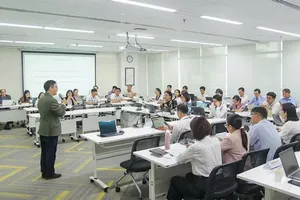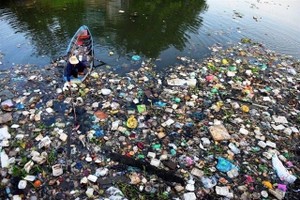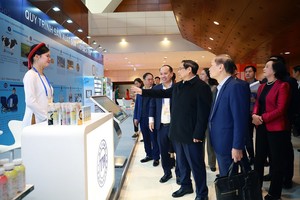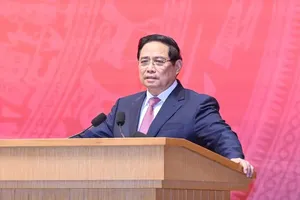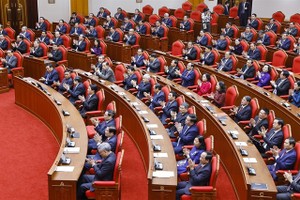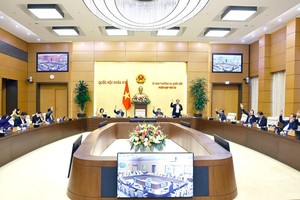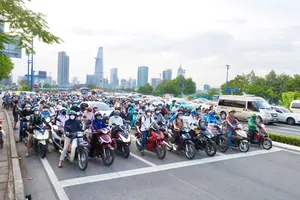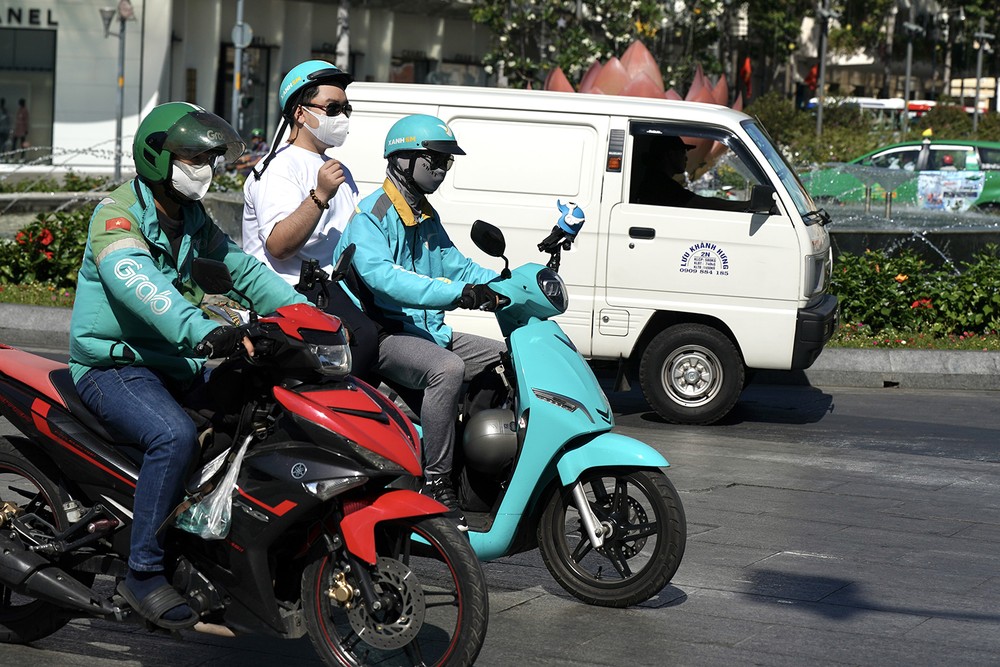
According to experts, to achieve the goal of reducing emissions to zero by 2050, the transportation industry needs more synchronous and drastic solutions in all fields; particularly, the industry must pay attention to reducing vehicle emissions on roads because they are responsible for 80 percent of emissions.
Switching to public transport should be prioritized
Deputy Director Pham Hoai Chung of the Institute of Transportation Strategy and Development under the Ministry of Transport said that according to the report of Nationally Determined Contribution (NDC), experts have proposed many solutions to reduce greenhouse gas emissions related to transportation.
Specifically, experts suggest the need to use energy efficiently and limit fuel consumption for newly manufactured, assembled and imported motor vehicles and increase the load factor of trucks.
In addition, people should be encouraged to switch from personal vehicles to public transport, from roads to railways, inland waterways and coastal roads.
At the same time, the conversion to electricity and green energy needs to be encouraged. Currently, the conversion from personal vehicles to public transportation has been gradually implemented.
Regarding this issue, Deputy Director of the Department of Science, Technology and Environment under the Ministry of Transport Tran Anh Duong said that the Ministry of Transport has had many solutions to convert public passenger transport to green vehicles which are environmentally friendly. However, in reality, the current rate of public transport is not high with the proportion of new electric buses accounting for about 2.8 percent of the total number of buses nationwide.
Meanwhile, personal vehicles continue to increase every year, while the government has just piloted the use of environmentally friendly fuels.
Worse, in big cities, urban traffic congestion still takes place sometimes. Furthermore, most old cars and motorbikes traveling on streets do not have environmental emissions controls. Many Vietnamese people still do not have the habit of periodically maintaining their vehicles as recommended by the manufacturer.
A series of difficulties in converting green vehicles show that in order to achieve the goals set out in the Prime Minister-approved Decision 876/QD-TTg on the action program on green energy conversion, reducing carbon and methane emissions from the transportation sector is very difficult. For instance, the Government sets a goal that by 2025, all fleets of buses will be replaced and newly invested using electricity and green energy.
Additionally, by 2030, the proportion of vehicles using electricity and green energy will reach at least 50 percent and all vehicles will use electricity and green energy by 2050.
Support policies must be promoted
Deputy Minister of Transport Le Anh Tuan said that the Ministry of Transport has proposed policies to support the conversion to electric vehicles including policies to encourage production, assembly, and import; amendment of regulations to promote conversion to electric vehicles such as the national technical regulations on environmental quality, the national technical regulations on driver reviver and rest areas.
Recently, many businesses such as VinFast Company, Hyundai Thanh Cong, and TMT Motor have been interested in Vietnam's electric vehicle market and conversion of vehicle production models.
According to experts, the increasing number of vehicles is putting pressure on the traffic infrastructure of big cities including Hanoi and HCMC. Traffic jams and congestion increase the risk of pollution caused by vehicle emissions.
A number of electric car models from famous brands in the world have also been imported to Vietnam. Up to now, there have been many businesses investing in infrastructure and trading in electric car charging stations, including several units investing in developing third-party charging stations such as EV One, EverEV, Eboost, and EVN.
However, to realize the goal of green energy conversion of the transportation industry, there are still many difficulties and challenges such as lack of infrastructure and charging stations, high cost of electric vehicles, lack of mechanisms to encourage the consumption and use of electric cars, poor awareness of agencies and businesses about green energy conversion.
Many experts recommended that there needs to be more specific and clear support policies to promote the development of electric vehicles and vehicles using green energy in Vietnam. In particular, manufacturing and assembling electric vehicles and producing electric vehicle batteries should be necessarily added to the lists of the fields given special investment incentives.
Though the subsidy policy is not the only solution, it is the fastest solution to stimulate people's need to switch to environmentally friendly vehicles and increase the coverage of electric vehicles on the streets.
On the other hand, the cost of electric vehicles must be reduced through financial support policies, improving the affordability of consumers; plus, businesses must receive loan interest rate support. These policies will help change social perspectives, create strong motivations to remove cultural barriers and change perceptions in the context of limited budgets.
According to the Prime Minister’s Decision No. 876/QD-TTg on conversion of green energy and reducing greenhouse, gas-carbon emissions and methane of the transportation industry, Vietnam will gradually limit and stop manufacturing, assembling, and importing cars, motorbikes, and mopeds that use fossil fuels for domestic use by 2040. By 2050, all road motor vehicles, including personal vehicles, public transport vehicles, and specialized vehicles, will convert to electricity and green energy.
Last but not least, electric charging infrastructure will be complete to provide green energy nationwide, meeting the needs of people and businesses. Minister of Transport Nguyen Van Thang said that Vietnam considers environmentally sustainable transport development a priority.
Personal means of transport are still increasing strongly
According to the latest data from the Ho Chi Minh City Department of Transport, the city is managing about 9 million vehicles, including 7.8 million two-wheeled motorbikes and nearly 1 million cars, not to mention vehicles from other localities in the city. On average, the city has nearly 1,000 new vehicles registered every day.
Similarly, the Hanoi Department of Transport is managing more than 7.8 million vehicles, including about 1.2 million cars and about 6.7 million two-wheeled motorbikes. While in 2017, there were only about 6 million vehicles in the capital city including just over 540,000 cars and more than 5.4 million motorbikes.



